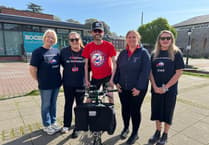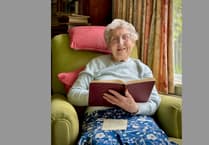WORK on permanent changes to Exeter’s Queen Street and Iron Bridge started in the week beginning Monday, April 17.
What was described originally as a temporary one-way scheme was installed in 2021 to help social distancing during the pandemic. Around 10,000 people walk and cycle along it each day.
Now many of the changes are being made permanent, including widening the southern footway between Northernhay Street and Paul Street, as well as some other alterations to access on Iron Bridge and Paul Street.
The new work will cost £245,000, funded through the council’s local transport plan.
The design was altered in January to “remain in budget” because of significant increases in the cost of materials and engineering work.
This led to the scrapping of dedicated cycle lanes planned for the part of Queen Street nearest the city centre.
The road will instead revert to having two lanes again.
However, as at present, private motor vehicles will still be unable to go west towards the clock tower, meaning a long drive round for anyone wanting to get to Exeter College’s creative industries and sports site, the Rougemont Hotel or Northernhay Street.
Iron Bridge will remain one-way eastbound, except for cycles, while cycles will be the only form of transport allowed to enter Queen Street from Paul Street.
Devon County Council claims the scheme will encourage “active travel” and will “help to reduce the dominance of vehicles in the city centre, all of which are targets of the adopted Exeter Transport Strategy 2020-2030”.
Speaking when the revised plan was agreed in January, local councillor Carol Whitton (Labour, St David’s and Haven Banks) said it would “deliver a significant and much-needed improvement for pedestrians, and particularly over-and-above the temporary engagement that’s in place at the moment”.
And while admitting to being “somewhat disappointed” about the loss of the dedicated cycle lanes, adding that cyclists should be “a high priority for us” Cllr Whitton acknowledged “some advantages” to the new proposal.
“Now that there will be two-way traffic, it will mean that those same cyclists are not held up waiting a long time for the lights to change and being tempted to jump the lights.”
When the measures were first introduced, Devon County Council described them as “temporary” but a four-week consultation on whether to keep them took place last year, following a recommendation from the Exeter highways and traffic orders committee (HATOC).
Around 600 public responses received were broadly spilt 50-50, though improving the area for pedestrians was generally welcomed, and most local organisations that responded were in favour, including Exeter College, which has many students moving between its building on Hele Road and Queen Street.
The council has previously revealed that traffic volumes are 25 per cent lower on Queen Street and 35 per cent down on the Iron Bridge since the changes were introduced, while the number of people cycling on Queen Street and Iron Bridge has gone up.
The work is expected to be completed by June.
Ollie Heptinstall
LDRS




